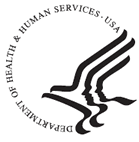DHHS
Releases Viral Hepatitis Action Plan
SUMMARY
New DHHS report details plan for prevention, care, and treatment
of hepatitis B and C. |
 During
a week that saw the approval of the
first direct-acting antiviral drug to treat hepatitis C, the
U.S. Department of Health and Human Services (DHHS) debuted a
new action plan for confronting the "silent epidemic"
of viral hepatitis, with a focus on hepatitis B and C. A Congressional
briefing accompanied the plan's release on May 12 in Washington,
DC. During
a week that saw the approval of the
first direct-acting antiviral drug to treat hepatitis C, the
U.S. Department of Health and Human Services (DHHS) debuted a
new action plan for confronting the "silent epidemic"
of viral hepatitis, with a focus on hepatitis B and C. A Congressional
briefing accompanied the plan's release on May 12 in Washington,
DC.
Hepatitis
B and C virus (HBV and HCV)
are "silent" because they often remain asymptomatic
for many years after initial infection; experts estimate that
two-thirds of people with viral hepatitis are not aware they are
infected.
Over
time, however, hepatitis B and C can progress to severe liver
disease including cirrhosis
and hepatocellular
carcinoma. Rates of cirrhosis and liver cancer are increasing
as "Baby Boomers" infected decades ago reach advanced
stages of disease.
The
federal government's action plan promotes expanded testing for
HBV and HCV so more people will know they are infected and can
start timely therapy. New classes of drugs are expected to revolutionize
hepatitis C treatment, curing more people and in less time than
standard interferon-based therapy. For HBV -- but not yet for
HCV -- an effective vaccine is available.
Below
is the text of a DHHS press release summarizing some of the key
points of the action plan. The full report, Combating the Silent
Epidemic of Viral Hepatitis, is available online at http://www.hhs.gov/ash/initiatives/hepatitis/actionplan_viralhepatitis2011.pdf.
HHS
Announces Action Plan to Prevent and Treat Viral Hepatitis
May
12, 2011 -- The U.S. Department of Health and Human Services today
launched its action plan to prevent and treat viral hepatitis,
a silent epidemic affecting 3.5-5.3 million Americans.
Though viral hepatitis is a leading infectious cause of death
in the U.S., many people who have it don't know they are infected,
so they are at greater risk for severe -- or even fatal -- complications
of the disease. Exacerbating the problem is the fact that health
care providers often lack the appropriate training to conduct
risk assessments, offer prevention counseling, provide diagnoses
and treat viral hepatitis.
"These infections have fueled a tragic cascade of human suffering,"
said Howard K. Koh, MD, MPH. "The new HHS action plan on
viral hepatitis represents an unprecedented call to action for
better education, treatment and prevention."
In January 2010, the Institute of Medicine (IOM) released a report
on hepatitis, highlighting barriers that impede efforts for hepatitis
prevention and control. The new HHS plan -- Combating the Silent
Epidemic: US Department of Health and Human Services Action Plan
for the Prevention, Care and Treatment of Viral Hepatitis
-- is a response to the IOM report. It outlines a comprehensive
action plan to raise awareness about viral hepatitis; creates
more opportunities to train health professionals to diagnose,
treat, vaccinate, and ultimately save lives; and builds upon the
new health insurance reform law to improve patient access to comprehensive
viral hepatitis-related prevention and treatment services through
expanded coverage.
The plan's success is contingent on leadership of government at
all levels and the active and informed participation of communities,
non-governmental organizations, health care providers, and the
private sector.
"No one government agency can fight viral hepatitis alone,
and here at CDC, we believe this action plan will not only strengthen
the work we've been doing, but help all of us across the government
collaborate to take our nation's prevention efforts to the next
level," said CDC Director Thomas R. Frieden, MD, MPH. "Far
too many Americans are unaware of the serious impact of viral
hepatitis and the devastating consequences that can result from
leaving it untreated. The time for action is now."
"We have seen the increasing prevalence of viral hepatitis
in our network of health centers and among people living with
HIV/AIDS in underserved areas and we know that minorities and
medically vulnerable populations are disproportionately affected,"
said Health Resources and Services Administrator Mary K. Wakefield,
RN, PhD. "This action plan is our best chance at stopping
the disease with increased access to information and quality care
for those at risk and those who are already infected.
HHS is committed to ensuring that new cases of viral hepatitis
are prevented and that persons who are already infected are tested,
informed about their infection, and provided with optimal counseling,
care and treatment. This increasing commitment is evidenced in
the new Healthy People 2020 plan, the first Healthy People
publication to document increasing viral hepatitis awareness among
infected persons as a formal HHS objective.
5/13/11
Reference
U.S.
Department of Health and Human Services. Combating the Silent
Epidemic of Viral Hepatitis: Action Plan for the Prevention, Care
and Treatment of Viral Hepatitis. http://www.hhs.gov/ash/initiatives/hepatitis/actionplan_viralhepatitis2011.pdf.
May 12, 2011.
Other
Sources
U.S. Department of Health and Human Services (OASH Press Office).
HHS Announces Action Plan to Prevent and Treat Viral Hepatitis.
Press release. May 12, 2011.
C
Bates. HHS Announces New Action Plan to Prevent, Care, and Treat
Viral Hepatitis. Blog.AIDS.gov. May 12, 2011.
National
Viral Hepatitis Roundtable. NVHR Commends New HHS Plan for the
Prevention and Treatment of Viral Hepatitis. Press release. May
12, 2011.
|
| |
|
|
